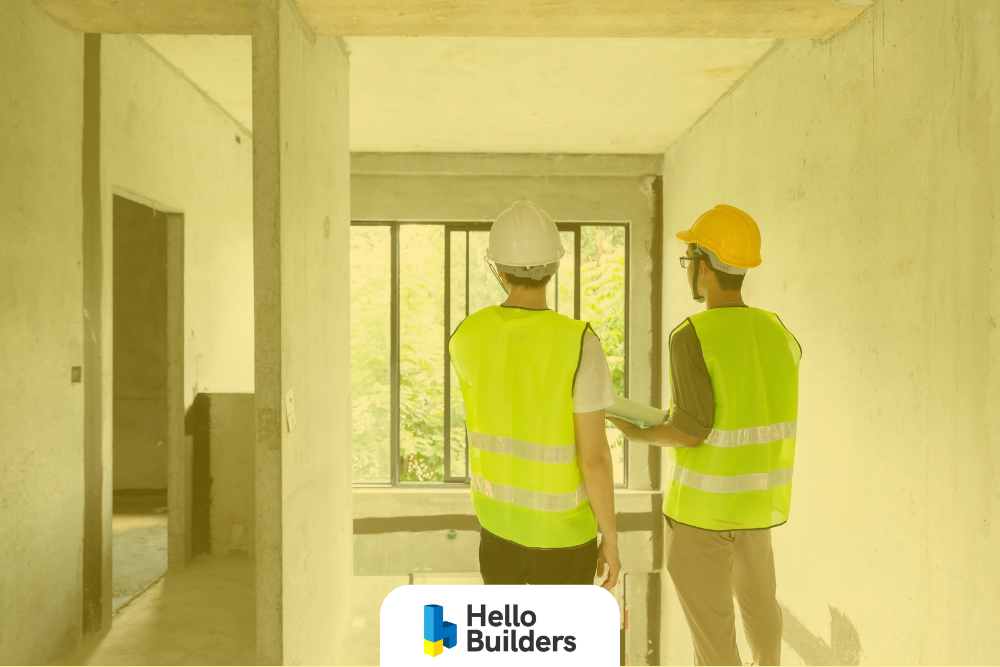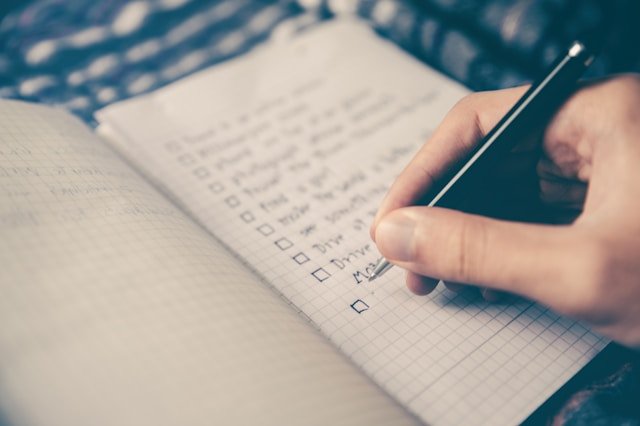
Building a house is one of the biggest investments you can make, but it comes with many challenges. In Sri Lanka, where climate, soil conditions, and local regulations play a key role, even small mistakes can lead to costly problems.
In this article, we have highlighted 10 common mistakes that homeowners and builders often make during construction and offer practical tips to avoid them. Reading this guide will help you plan better, save money, and ensure your house is safe, comfortable, and long-lasting.
So, without further ado, let’s get started…
1. Skipping Soil Testing
Soil testing is a crucial step before starting any construction. The type and condition of soil determine how strong and stable the foundation will be. Skipping this step can lead to serious problems later, including cracks in walls, uneven floors, or even structural damage.
Why soil testing matters:
- Determines the soil type and its load-bearing capacity.
- Identifies potential issues like weak soil, high clay content, or areas prone to waterlogging.
- Helps engineers design the right type of foundation for your house.
Risks of ignoring soil testing:
- Foundation settlement or sinking over time.
- Cracks in walls and floors, which may be costly to repair.
- Increased maintenance and safety risks.
In Sri Lanka, where soil types can vary significantly from one area to another, a soil test ensures that your house is built on a strong and safe foundation.
2. Poor Planning and Unclear Design
Starting construction without a clear plan can lead to many problems. A detailed design and proper planning are essential to ensure the project runs smoothly and stays within budget.
Consequences of poor planning:
- Delays in construction due to confusion or missing steps.
- Increased costs caused by unexpected changes or errors.
- Functional problems such as poorly placed rooms, insufficient storage, or poor ventilation.
How to avoid this mistake:
- Prepare a detailed site plan and floor layout before construction begins.
- Include measurements, room placements, plumbing, and electrical plans in the design.
- Review the plan with an architect or engineer to identify potential issues early.
Good planning helps avoid last-minute changes, keeps the project on schedule, and ensures the house is functional and comfortable for daily living.
3. Hiring Unlicensed or Inexperienced Builders
Choosing the right contractor is one of the most important decisions in house construction. Hiring unlicensed or inexperienced builders can create serious problems that affect the quality, safety, and legality of your house.
Problems with unqualified builders:
- Poor workmanship leading to structural issues or finishing defects.
- Construction delays due to lack of experience or improper management.
- Legal issues if the builder is not registered or licensed with local authorities.
Tips to avoid this mistake:
- Always check for valid licenses and certifications before hiring.
- Ask for references or past project examples to verify their experience.
- Avoid choosing contractors solely based on low cost. Quality and reliability are more important.
Using a qualified and experienced builder ensures that your construction is safe, meets legal standards, and is completed on time.
4. Ignoring Government Approvals and Permits
Obtaining proper government approvals and permits is a critical step in house construction in Sri Lanka. Skipping this process may seem like a way to save time or money, but it can lead to serious legal and financial problems in the future.
Why approvals and permits are important:
- To ensure that your construction complies with local building codes and regulations.
- To confirm that the land use is suitable for residential construction.
- To protect you from legal disputes with neighbors or authorities.
Risks of skipping approvals:
- Fines or penalties from local authorities, which can be costly.
- Problems connecting essential utilities such as water, electricity, and sewage.
- Difficulty selling or transferring the property in the future, as legal compliance is required for resale.
- Potential orders to halt construction or even demolish non-compliant structures.
How to avoid this mistake:
- Submit all required applications and obtain permits from local municipal councils or relevant authorities before construction starts.
- Work with your architect or builder to ensure every aspect of the design meets regulatory standards.
- Keep copies of all approvals and documents for future reference and resale purposes.
Because of these facts, securing the proper government approvals will give you peace of mind, knowing that your house is legally recognized, safe, and built according to established standards.
5. Budget Mismanagement
Managing the budget is one of the most critical aspects of house construction. Failing to plan finances properly can disrupt construction, reduce quality, and cause unnecessary stress.
Common causes of budget problems:
- Underestimating the cost of materials, labor, and equipment.
- Ignoring price fluctuations for construction materials, which are common in Sri Lanka.
- Frequent design changes or additions during construction that increase expenses.
- Not setting aside contingency funds for unexpected issues like delays or repairs.
Consequences of poor budget management:
- Construction delays due to lack of funds.
- Use of cheaper or substandard materials to cut costs.
- Compromised quality in finishing, structure, or safety measures.
- Increased stress and conflicts between homeowners and contractors.
Tips to manage your budget effectively:
- Prepare a detailed budget including all major expenses and a 10–15% contingency fund for unexpected costs.
- Obtain multiple quotes from suppliers and contractors to compare prices.
- Stick to the approved design and avoid frequent changes unless absolutely necessary.
- Track expenses regularly to ensure you remain within the planned budget.
Proper budget management ensures that your house construction stays on track, maintains quality, and avoids financial stress throughout the project.
6. Not Considering Drainage and Flood Risks
Proper drainage planning is essential when building a house, especially in Sri Lanka where heavy rains are common. Ignoring drainage and flood risks can lead to long-term damage and costly repairs.
Why drainage matters:
- To prevent water from accumulating around the foundation, which can weaken the structure.
- To reduce the risk of mold, dampness, and damage to walls and flooring.
- To protect landscaping and outdoor areas from erosion and waterlogging.
Risks of poor drainage planning:
- Water enters the house during heavy rain, causing damage to interiors and furniture.
- Foundation settling or cracking due to constant exposure to water.
- Health hazards from damp conditions and mold growth.
How to plan for proper drainage:
- Design the plot with a slope that directs rainwater away from the house.
- Install gutters, downspouts, and stormwater drains to manage rainfall effectively.
- Consider raised floor levels in areas prone to flooding.
- Check for natural water flow patterns on the land before construction begins.
Taking drainage and flood risks seriously ensures that your house remains safe, dry, and durable, even during Sri Lanka’s heaviest rains.
7. Using Low-Quality Materials
The quality of materials used in construction directly affects the strength, durability, and safety of a house. Using substandard or adulterated materials can lead to serious long-term problems.
Common problems with low-quality materials:
- Weak foundations and walls due to poor cement or bricks.
- Rusting of steel and reduced structural strength.
- Faster deterioration of floors, walls, and roofs.
- Increased maintenance costs over time.
How to ensure material quality:
- Buy cement, bricks, steel, and other materials from trusted suppliers.
- Check certifications and quality standards for each material.
- Avoid using leftover or cheap materials that do not meet safety standards.
- Inspect materials before construction begins and regularly during the process.
Using high-quality materials ensures that your house remains strong, safe, and durable for many years. It may cost slightly more upfront, but it saves money and problems in the long run.
8. Ignoring Structural Integrity and Building Codes
Ensuring structural integrity and following building codes are essential for a safe and long-lasting house. Ignoring these standards can lead to serious safety risks and legal problems.
Why structural integrity is important:
- Foundations must be strong enough to support the entire building.
- Load-bearing walls and beams should be designed to handle weight safely.
- Proper construction prevents cracks, uneven settling, and potential collapse.
Risks of ignoring building codes:
- Houses built without adherence to codes may be unsafe during heavy rains, earthquakes, or strong winds.
- Legal issues or penalties if authorities identify violations.
- Difficulty selling the house in the future, as code compliance is required for resale.
How to maintain structural integrity:
- Work with a qualified structural engineer during design and construction.
- Ensure that all foundations, beams, and walls are built according to the approved structural plan.
- Regularly inspect construction progress to ensure compliance with building codes.
- Use recommended materials and proper construction techniques.
Following structural guidelines and building codes ensures the safety of residents, protects your investment, and prevents costly legal and repair issues.
9. Neglecting Natural Light, Ventilation, and Storage
A house is not just about walls and roofs; it must be comfortable and healthy for daily living. Neglecting natural light, ventilation, and storage can make even a well-built house unpleasant to live in.
Importance of natural light and ventilation:
- Proper sunlight reduces dampness and helps prevent mold growth.
- Good airflow keeps the house cool, especially in Sri Lanka’s tropical climate.
- Adequate windows and openings improve overall comfort and health.
Storage considerations:
- Lack of storage leads to cluttered living spaces.
- Proper storage planning ensures efficient use of space in kitchens, bedrooms, and living areas.
- Built-in cabinets and designated storage areas prevent future remodeling issues.
Tips to improve light, airflow, and storage:
- Plan window placement and size based on sun direction and ventilation needs.
- Include ventilated spaces like verandas or open corridors where possible.
- Integrate sufficient storage in the initial design to avoid costly adjustments later.
Focusing on light, ventilation, and storage during the planning stage makes your home more livable, healthier, and practical for daily use.
10. Overlooking Future Needs and Landscaping
When building a house, it is important to think beyond the present. Not considering future family needs, resale value, or proper landscaping can lead to long-term inconvenience and reduce the overall value of your property.
Why future planning matters:
- Families may grow or needs may change, requiring additional rooms or modifications.
- Houses designed without flexibility can be difficult or expensive to expand later.
- Considering resale value ensures that the house appeals to potential buyers in the future.
Importance of landscaping:
- Proper landscaping helps with drainage and prevents waterlogging around the house.
- Well-planned outdoor spaces improve aesthetics and overall comfort.
- Landscaping can protect the house from erosion and environmental damage.
Tips to plan for future needs and landscaping:
- Include extra space for future extensions or additional rooms.
- Design gardens, driveways, and outdoor areas that are functional and easy to maintain.
- Choose landscaping features that complement the house design and improve property value.
Thinking ahead ensures your house remains practical, attractive, and valuable for years to come.
Additional Mistakes Worth Mentioning
In addition to the top 10 common mistakes, there are several other issues that homeowners and builders should be aware of. While these may seem less critical, overlooking them can still lead to increased costs, reduced comfort, or long-term problems.
Key additional mistakes:
- Relying Solely on Visual Quality Checks: Not testing or verifying material quality through proper certifications can cause hidden problems over time.
- Changing Designs Frequently During Construction: Making frequent modifications increases costs, delays the project, and can affect structural integrity.
- Neglecting Utility Planning: Poor placement of plumbing, electrical wiring, and sewage systems may require costly adjustments later.
- Ignoring Local Climate Considerations: Failing to account for monsoon rains, humidity, or heat can affect the house’s durability and comfort.
- Overlooking Safety Measures on Site: Lack of safety protocols during construction increases the risk of accidents and legal issues.
- Not Considering Maintenance and Durability: Choosing finishes, fixtures, or materials without thinking about long-term upkeep can raise future costs.
- Neglecting Landscaping Effects: Improper landscaping can worsen drainage problems and negatively impact the house’s aesthetics.
- Ignoring Resale Value Considerations: Over-customizing without considering market preferences can reduce the property’s resale potential.
Being aware of these additional mistakes helps ensure that your house is not only safe and functional but also practical, comfortable, and valuable for the future.
Need Help on Building Your Dream Home?
At Hello Builders, we specialize in turning your vision into reality with high-quality construction, modern designs, and expert project management. From luxury villas to contemporary homes, we handle every step of the process with professionalism and attention to detail.
Here’s why Hello Builders is the trusted choice for homeowners in Sri Lanka:
- Expertise & Quality: We use certified materials and follow best practices to ensure your home is safe, durable, and stylish.
- Comprehensive Services: Architectural design, structural engineering, interior solutions, council approvals, and full project management(all under one roof).
- Customer-Focused Approach: We work closely with you to bring your dream home to life while respecting your budget and timeline.
Take the first step toward your perfect home today. Click below to get in touch with our team!
| Contact Us |
Final Thoughts
Building a house in Sri Lanka is a significant investment that requires careful planning, informed decision-making, and attention to detail. From conducting proper soil tests and hiring qualified builders to managing your budget, considering drainage, and planning for future needs, every step plays a critical role in ensuring your home is safe, durable, and comfortable.
Furthermore, taking precautions to avoid these common mistakes(both major and minor) from happening can save you time, money, and stress while enhancing the long-term value and livability of your property.
By following the tips and insights outlined in this guide, you can confidently navigate the construction process, make informed choices, and create a home that meets your needs today and adapts to the needs of tomorrow. Thoughtful planning, quality materials, and professional guidance are your best tools for turning your dream house into a lasting reality.
Key Takeaways
- Conduct Soil Testing First – Understanding soil type and load-bearing capacity is essential to prevent foundation problems and structural damage.
- Plan and Design Thoroughly – Clear, detailed plans for layout, plumbing, and electrical systems reduce delays, mistakes, and extra costs.
- Hire Licensed and Experienced Builders – Qualified contractors ensure quality workmanship, legal compliance, and timely project completion.
- Obtain Government Approvals and Permits – Securing necessary permits avoids fines, legal issues, and complications with utilities or future resale.
- Manage Your Budget Carefully – Prepare a detailed budget with contingency funds, track expenses, and avoid frequent design changes.
- Account for Drainage and Flood Risks – Proper drainage systems and site planning protect your house from water damage and foundation issues.
- Use High-Quality Materials – Investing in certified, durable materials ensures safety, longevity, and reduces long-term maintenance costs.
- Follow Structural Guidelines and Building Codes – Adhering to codes and ensuring structural integrity protects your home from hazards and legal complications.
- Prioritize Natural Light, Ventilation, and Storage – Thoughtful planning for sunlight, airflow, and storage enhances comfort, health, and functionality.
- Plan for Future Needs and Landscaping – Consider future family growth, expansions, and well-designed outdoor spaces to maintain practicality, aesthetics, and property value.
FAQs
How important is planning before starting house construction in Sri Lanka?
Planning is crucial to avoid wasting materials, costly design changes, and poor space usage. Working with qualified architects and visualizing the design beforehand ensures functionality and smoother construction.
What building regulations must I follow for house construction in Sri Lanka?
You need approvals from UDA, Municipal Council, or Pradeshiya Sabha, including building permits, environmental clearances, zoning compliance, and land deeds. Skipping these can cause fines or demolition.
Can poor site selection affect my house construction in Sri Lanka?
Yes, without soil testing, unsuitable soil like clay or loose sand can cause foundation failures such as cracks or tilting. Sites prone to flooding require special foundation systems.
What are typical construction delays and how can they be avoided?
Delays often stem from unforeseen weather, soil issues, or contractor inefficiencies. Planning for contingencies and choosing reliable contractors minimize delays.






